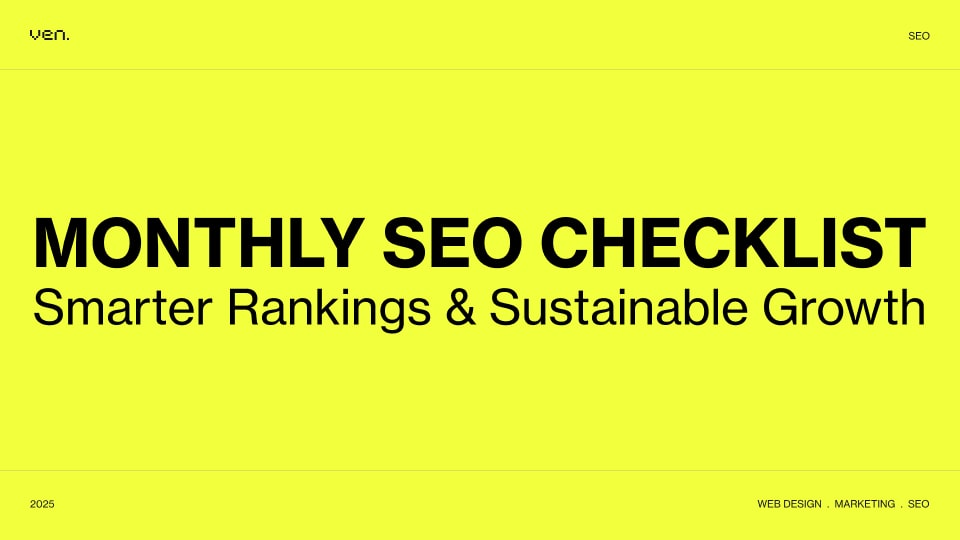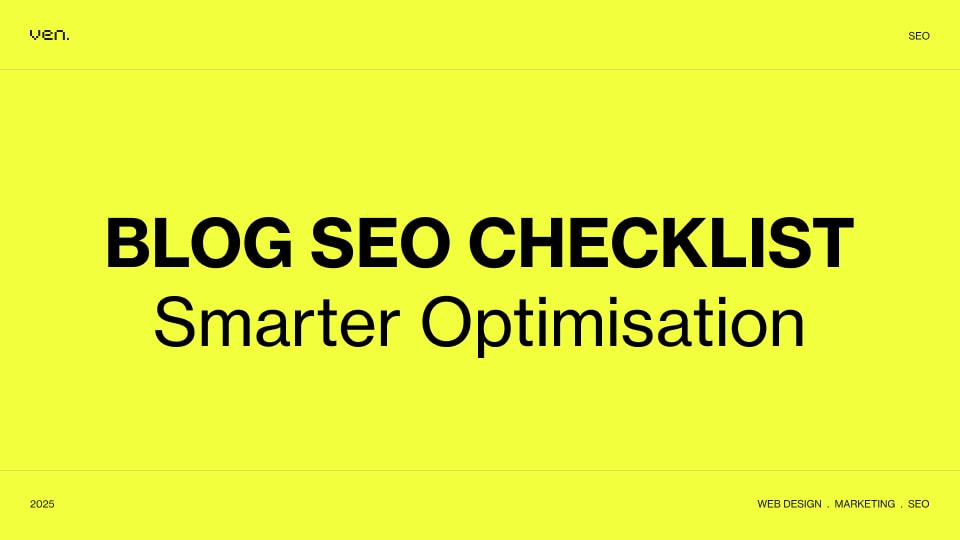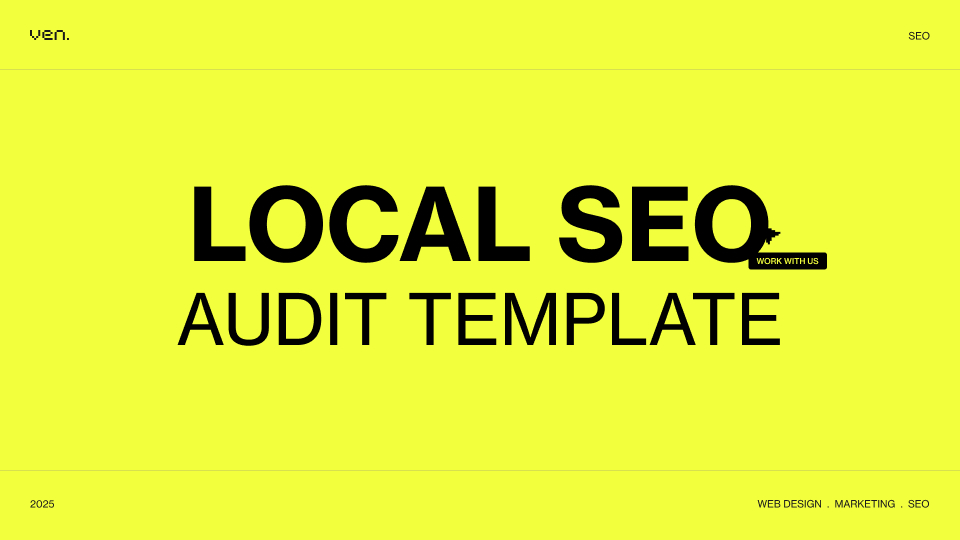Whether you’re a growing SME or a startup aiming for visibility, SEO isn’t a one-time job. It’s a continuous process that requires smart, consistent action. This monthly SEO checklist helps you stay focused, aligned, and results-driven. A monthly approach allows for regular updates, data-driven insights, and agile improvements that ensure long-term SEO success.
Plan and Schedule Your Content Strategy
A critical part of your monthly SEO checklist should be planning your upcoming content. This ensures you maintain a consistent publishing schedule and align your articles with keyword research, customer queries, and seasonal trends.
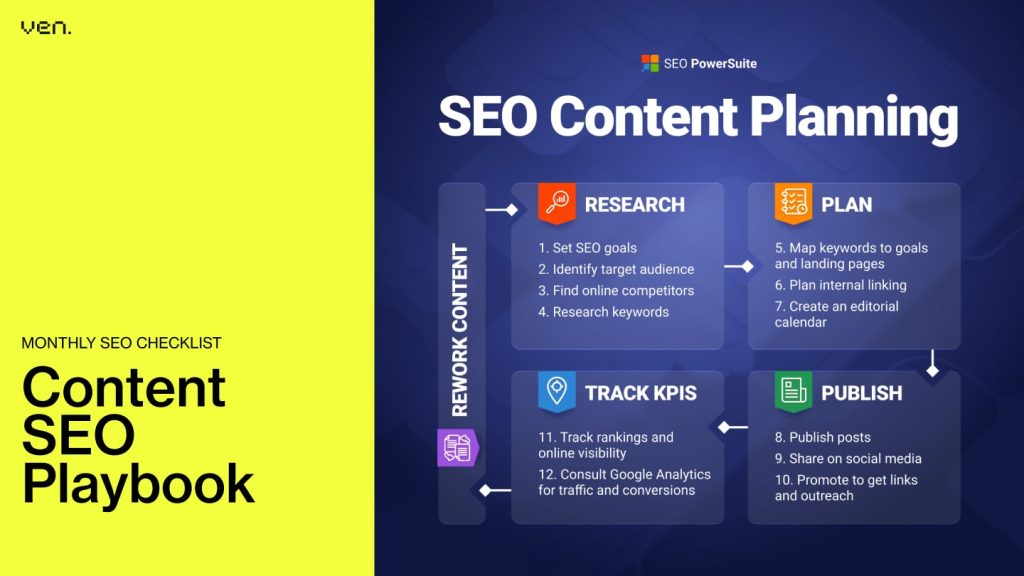
Use insights from tools and your customer service team to identify relevant topics. Prepare content briefs that incorporate search intent and your brand’s tone. Organise your topics into a content calendar with deadlines for drafting, reviewing, and publishing.
Include a mix of blog posts, video content, infographics, and downloadable resources to diversify engagement. This also improves your reach and boosts the chances of acquiring natural backlinks.
Example: One VEN client in the property sector increased organic leads by 24% in three months by aligning content planning with trending buyer questions and optimised publishing schedules.
Recommended Tools:
- Google Sheets or Trello for editorial calendars
- AnswerThePublic, Exploding Topics for trend insights
- Surfer SEO for content briefs
SEO Monthly Content Planning Checklist
- Review content goals and campaign priorities
- Analyse previous content performance and traffic trends
- Brainstorm topic ideas based on trends, gaps, and SEO data
- Finalise 4–6 key topics for the upcoming month
- Conduct keyword research for each topic
- Map keywords to content based on intent and funnel stage
- Choose content formats (e.g., blog, video, infographic, guide)
- Outline each piece with headlines, structure, and a focus keyword
- Assign content creation tasks to writers, designers, or editors
- Create internal briefs with tone, CTA, SEO, and links
- Align topics with seasonal campaigns or promotions
- Double-check keyword use for gaps and overlaps
- Plan an internal and external linking strategy per article
- Schedule publishing dates in your content calendar
- Set deadlines for draft, review, and publishing
- Add content to project management tools or a Notion board
- Optimise meta titles, descriptions, and alt text in advance
- Prepare distribution strategy (email, socials, paid, SEO)
- Track live content performance using analytics tools
- Log lessons, wins, and content ideas for future planning
Estimated time: 2 to 3 hours/month
Evaluate and Improve Underperforming Keywords
Regularly evaluating underperforming keywords helps you identify opportunities to refresh outdated content or replace ineffective terms with high-potential alternatives. This is especially important if algorithm updates or shifting user behaviour impact your rankings.
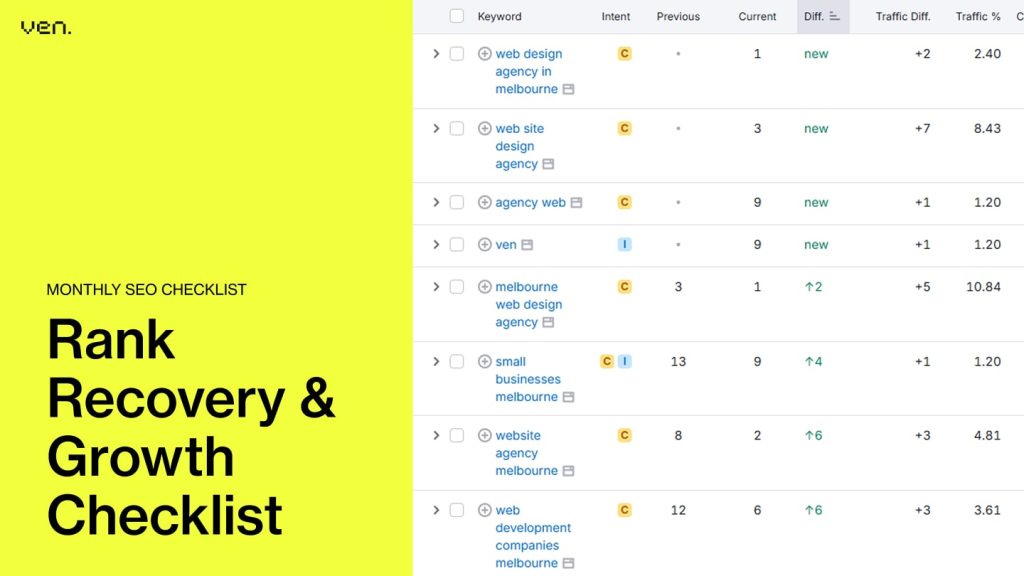
Incorporate this analysis into your monthly SEO checklist to catch issues early. Start by checking keyword drops via tools like SEMrush Position Tracking or Google Search Console. Review the affected pages and refresh them with stronger search intent targeting or additional internal links.
Example: After analysing declining blog traffic, a VEN Agency client replaced underperforming keywords in 5 pages. The result was a 31% increase in page-specific traffic within a single quarter.
Recommended Tools:
- Google Search Console
- SEMrush or Ahrefs
Monthly SEO Content Optimisation & Recovery Checklist
- Identify keywords with position drops or declining CTR
- Filter for high-volume terms with weak performance
- Review Google Search Console and analytics for insights
- Analyse content for intent mismatch or outdated info
- Flag thin or overlapping content competing for similar keywords
- Audit headings, meta tags, and internal links for relevance
- Rewrite or re-optimise content to better match search intent
- Merge duplicate or low-performing articles targeting similar terms
- Replace low-converting keywords with relevant long-tail alternatives
- Add updated visuals, stats, or media to boost engagement
- Re-check readability and structure for user experience
- Add new internal links to drive SEO authority
- Resubmit updated pages to Google for indexing
- Track rankings, CTR, and engagement post-update
- Maintain a log of underperforming pages for future rounds
Estimated time: 1.5 to 2 hours/month
Monitor UX and Site Design Elements
Great SEO performance relies heavily on how users interact with your website. A poor user experience can drive up bounce rates and reduce conversions, impacting your SEO health. Your monthly SEO checklist should include a review of visual, layout, and functional design.

Check for mobile responsiveness, cluttered layouts, confusing navigation, and accessibility issues. Tools like Hotjar or Crazy Egg allow you to visualise user journeys and identify where users drop off.
Regularly monitoring your website’s UX and design elements is essential for keeping users engaged and driving conversions. Every detail matters, from layout and navigation to speed and responsiveness. Consistent website design & development ensures bugs are fixed, new features are implemented, and performance stays strong across all devices. At VEN, we combine design precision with agile development to make sure your site looks sharp and functions seamlessly.
Example: A client site saw a 15% bounce rate improvement after VEN redesigned their homepage CTAs and resolved mobile spacing issues identified in a monthly UX audit.
Recommended Tools:
- Google PageSpeed Insights
- Hotjar or Crazy Egg
- Mobile-Friendly Test (Google)
Monthly SEO – UX Testing & Optimisation Checklist
- Test site experience across desktop, tablet, and mobile
- Check visual consistency and alignment with brand guidelines
- Review page layouts for clarity, spacing, and readability
- Analyse heatmaps for click, scroll, and hover behaviour
- Identify and fix any layout or navigation issues
- Ensure all CTAs are visible, action-oriented, and accessible
- Confirm buttons and links are working across all devices
- Test all forms for usability, error handling, and conversions
- Review interactive features for load speed and responsiveness
- Check for friction in user flows (homepage to goal completion)
- Validate heading structure for accessibility and SEO
- Optimise content hierarchy and whitespace for readability
- Review core web vitals and mobile usability in Search Console
- Investigate bounce rate spikes and low engagement pages
- Adjust UX based on user behaviour and conversion data
- Run usability tests or collect real-user feedback
- Check live chat, newsletter popups, and engagement tools
- Test key journeys like booking, checkout, or lead generation
- Document fixes and improvements in your UX report
- Re-test updates to confirm a better experience post-launch
Estimated time: 2 to 3 hours/month
Expand Your Link Building Strategy with Outreach
A strong SEO strategy goes beyond just running a backlink audit. Each month, create a clear plan to earn high-quality links that actually make a difference. Not all backlinks are equal. A link from your mate’s hobby blog won’t help your SaaS product unless it magically solves the same problem.

Start by highlighting content that’s genuinely valuable. Focus on blogs, directories, and publications that match your niche. Guest posting, broken link building, and custom visuals are all smart ways to get noticed. Use a CRM to track who you’ve contacted, what’s been published, and what needs a follow-up.
Keep an eye on your link profile, remove anything toxic, and tweak your tactics as you go. Smart, relevant, and consistent backlinks are what drive real SEO growth.
Example: A VEN client in the finance industry gained 12 backlinks in a single campaign by repurposing one lead magnet into guest blogs and infographics shared with media partners.
Recommended Tools:
- Hunter.io (email outreach)
- BuzzStream or Pitchbox (link outreach)
- Ahrefs or SEMrush (backlink tracking)
SEO Monthly – Guest Posting & Backlink Quality Checklist
- Identify high-impact pages to support with backlinks
- Set clear backlink and domain authority goals
- Perform a backlink audit to assess the current link profile
- Identify and disavow toxic backlinks
- Research niche-relevant blogs and media that accept guest posts
- Build a list of guest posting opportunities with domain metrics
- Validate each site for SEO relevance and traffic quality
- Develop tailored topic pitches for each publication
- Write original, high-value guest content
- Ensure contextual, natural link placement to target pages
- Track submitted and published guest posts
- Monitor backlinks gained from guest content
- Schedule monthly link profile checks
- Maintain a list of top-performing guest post sites
- Rotate anchor text naturally to avoid over-optimisation
- Refresh guest post ideas quarterly based on SEO goals
- Document link outcomes and traffic impact from each guest post
- Align all guest content with brand tone and messaging
- Use AI tools to discover new guest post opportunities
- Maintain consistency in contributor bios and brand mentions
Estimated time: 4 to 6 hours/month
Why a Monthly SEO Checklist is Essential for Success
Building and maintaining a strong online presence takes more than one-off optimisation. A monthly SEO checklist equips your team with a repeatable, strategic roadmap to keep your website competitive, discoverable, and high-performing.
From keyword tracking to technical audits, UX improvements to backlink outreach, monthly consistency is what separates stagnant rankings from sustainable growth. Whether you’re managing SEO in-house or with an agency partner like VEN, staying committed to a structured checklist ensures your efforts remain focused, measurable, and aligned with your business goals.
Start implementing your own monthly SEO checklist today and watch your visibility, traffic, and conversions steadily climb.
Frequently Asked Questions
Does SEO Need to Be Done Monthly?
Yes, SEO must be maintained monthly. Search engines update their algorithms frequently, and your competitors are always optimising. Monthly attention helps you adapt to these changes, fix issues early, and capitalise on new ranking opportunities. Including this discipline in your monthly SEO checklist ensures steady visibility and traffic.
How Many Blogs Per Month for SEO Are Recommended?
For most businesses, 2 to 4 high-quality blog posts per month strike the right balance between volume and depth. Each post should target user intent, be well-researched, and link internally to relevant service pages. This approach aligns well with any comprehensive monthly SEO checklist.
How Much Does SEO Cost Per Month?
SEO pricing varies based on your goals, market competition, and the level of support you need. While DIY tools and freelancers range from $200–$500, and small agency packages run $800–$2,000, enterprise strategies can go beyond $3,000.
At VEN, we go further. As an AI-driven digital agency, we combine advanced automation with human expertise to deliver smarter, faster, and more effective SEO strategies. Every solution is tailored to your business objectives—driving visibility, conversions, and long-term growth.
Contact VEN for a personalised quote—discover how intelligent SEO can deliver better value and stronger ROI.
